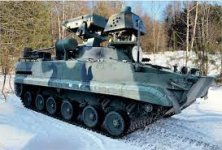You are using an out of date browser. It may not display this or other websites correctly.
You should upgrade or use an alternative browser.
You should upgrade or use an alternative browser.
- Thread starter Ghost soldier
- Start date
Ruselectronics holding of the Rostec State Corporation announced that it will begin serial production of the Magister-SV military air defense automated fire control systems in 2021. The new unified module is designed for airspace reconnaissance using external and built-in reconnaissance and anti-aircraft combat coordination. The development passed state tests and was accepted for supplying the Russian army.
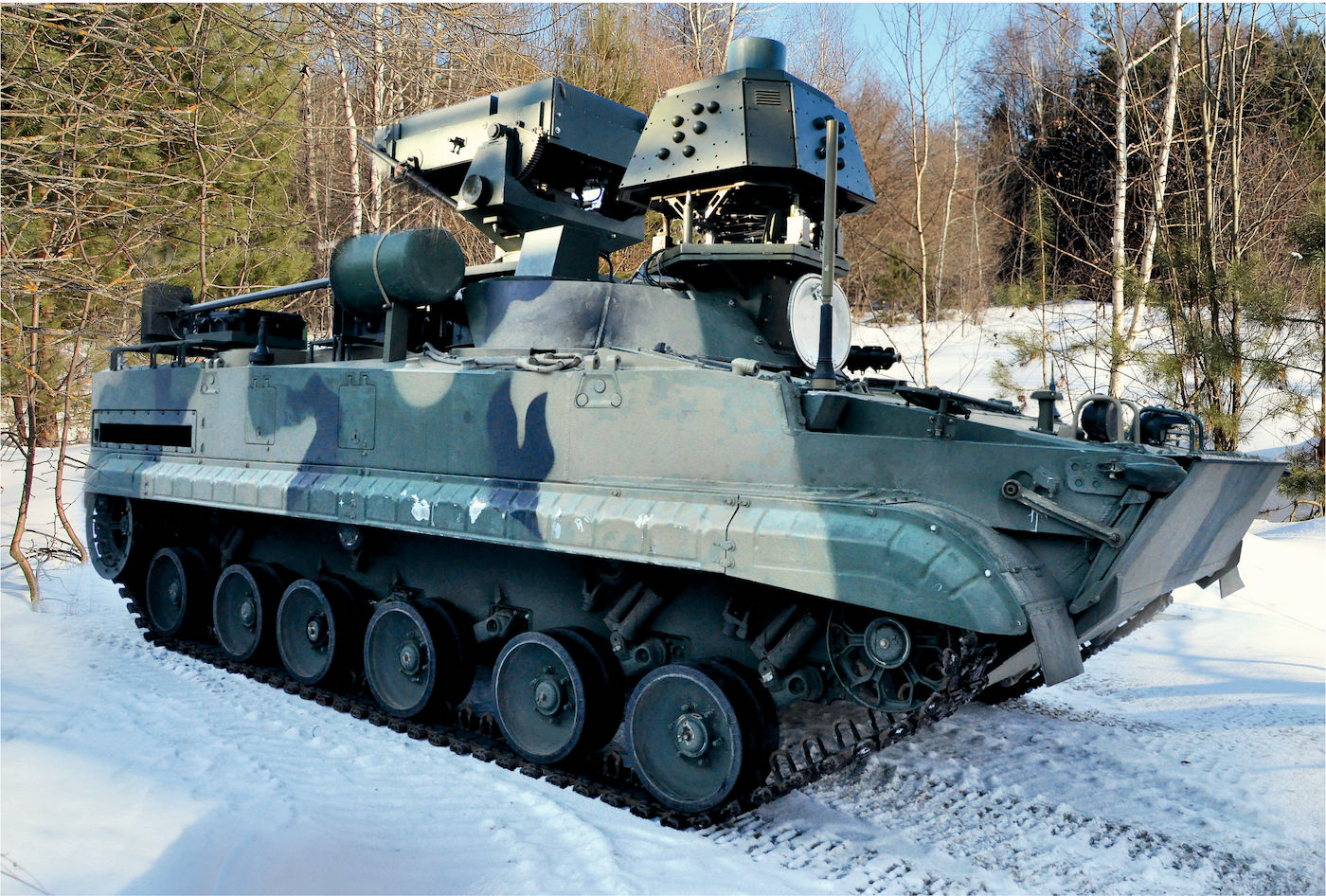
The complex includes a unique optoelectronic station with the functions of automatic detection, recognition, and tracking of air targets. To provide such technical capabilities, the developers needed to create a database of the optical characteristics of various air targets and the characteristics of the radiation of natural interference.
A small-sized radar detector combines the capabilities of a surveillance radar and the high accuracy of coordinate measurement inherent in radar tracking systems. The architecture implemented in it is ahead of all currently known radar detection tools. When developing a unified control module, special attention was paid to increasing the secrecy and survivability of the air defense grouping. It is also possible to integrate a promising and existing anti-aircraft weapon into the air defense control subsystem, capable of fighting against attacking elements of high-precision weapons and multipurpose unmanned aerial vehicles.
As part of Rostec, the development and production of unified Magistr-SV modules are carried out by NPP Rubin (part of the Vega Concern of the Ruselectronics holding).
“The software and technical solutions applied in Magister-SV make it possible to fight more effectively the existing and prospective means of enemy air attack. During the development, the experience of the military operation of products from the Barnaul-T complex was taken into account. The unified module includes qualitatively new means of airspace reconnaissance that meet modern requirements for range and accuracy of detecting air targets. This is an optoelectronic station, a portable optoelectronic observation device, a small-sized radar detector, and an electronic reconnaissance station,"Vyacheslav Mikheev, General Director of the Vega Concern, said.
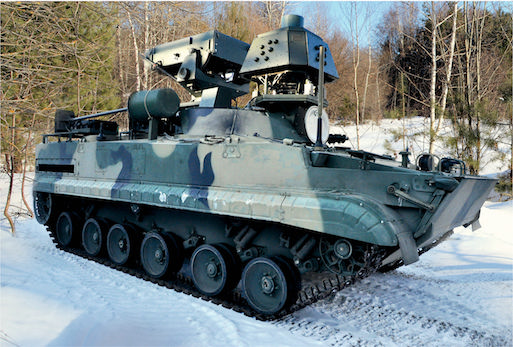
 dfnc.ru
dfnc.ru

The complex includes a unique optoelectronic station with the functions of automatic detection, recognition, and tracking of air targets. To provide such technical capabilities, the developers needed to create a database of the optical characteristics of various air targets and the characteristics of the radiation of natural interference.
A small-sized radar detector combines the capabilities of a surveillance radar and the high accuracy of coordinate measurement inherent in radar tracking systems. The architecture implemented in it is ahead of all currently known radar detection tools. When developing a unified control module, special attention was paid to increasing the secrecy and survivability of the air defense grouping. It is also possible to integrate a promising and existing anti-aircraft weapon into the air defense control subsystem, capable of fighting against attacking elements of high-precision weapons and multipurpose unmanned aerial vehicles.
As part of Rostec, the development and production of unified Magistr-SV modules are carried out by NPP Rubin (part of the Vega Concern of the Ruselectronics holding).
“The software and technical solutions applied in Magister-SV make it possible to fight more effectively the existing and prospective means of enemy air attack. During the development, the experience of the military operation of products from the Barnaul-T complex was taken into account. The unified module includes qualitatively new means of airspace reconnaissance that meet modern requirements for range and accuracy of detecting air targets. This is an optoelectronic station, a portable optoelectronic observation device, a small-sized radar detector, and an electronic reconnaissance station,"Vyacheslav Mikheev, General Director of the Vega Concern, said.

Serial Production of Magister-SV to Start in 2021 – New Defence Order. Strategy
Ruselectronics holding will begin serial production of the Magister-SV military air defence automated fire control systems in 2021.
Attachments
Russian Armed Forces are deploying its massive atomic mortars to the border with Ukraine, according to videos posted on social media.
Earlier last week, video footage had emerged on social media of the Russian 2S4 Tyulpan self-propelled mortars moving toward the border with Ukraine. The heavy artillery systems were spotted at the railway station in Kropotkin, Krasnodar region.
The 2S4 Tyulpan, also known at West as the M-1975, is a Soviet design 240-mm self-propelled mortar.
The heavy mortar mounted on a tracked, self-propelled chassis. A hydraulic system raises and lowers the tube from the carrying position to the firing position. As was customary, the self-propelled artillery system was christened with an alpha-numeric designator (the 2S4) and the name of a flower (the Tulip).
Due to the large size, it can fire high-explosive, incendiary, guided, cluster, neutron and nuclear warheads, some of which are capable of hitting targets at a distance of about 20 km. It can also fire the “Smel’chak” (“Daredevil”), a laser-guided round.
The 2S4 self-propelled mortars had been practically removed from service, with around 430 of these weapons remaining in Russia, kept in storage at military bases, but since 2016 they were partially returned to service.
In addition, earlier in November 2017, Russian media reported the Urals Transport Engineering Plant (Uraltransmash) modernized a batch of unique self-propelled mortars, which for a long time were in reserve. According to the local media, the exact number of upgraded self-propelled mortars is kept secret, but it is noteworthy that the project has been started in 2016.
In December 2017, the artillery brigade of the 2nd combined arms army stationed in the Orenburg region has officially received the first batch of 8 upgraded 2S4 self-propelled mortars.

Russian atomic mortars spotted moving toward border with Ukraine
Russian Armed Forces are deploying its massive atomic mortars to the border with Ukraine, according to videos posted on social media. Earlier last week, video footage had emerged on social media of the Russian 2S4 Tyulpan self-propelled mortars moving toward the border with Ukraine. The heavy...
Rostec has demonstrated the joint operation of Msta-S self-propelled howitzer, modernized for NATO-standard 155 mm caliber, and Orlan-10E reconnaissance drone to representatives of a foreign customer. During the demonstration, the artillery system created by Uraltransmash (a subsidiary of UralVagonZavod under Rostec State Corporation) fired at a maximum range of 40 kilometers and showed excellent coordination capabilities with the UAV. The demonstration took place at the Staratel training ground in the city of Nizhny Tagil.
“The combat capabilities of the modernized 155 mm self-propelled howitzer 2S19M1-155 were demonstrated to a foreign customer. It fired at a maximum distance of 40 km with laying recovery in automatic mode. Msta-S has also shown excellent results when used in coordination with a control system and Orlan-10E UAV, reported the Rostec armaments cluster.
In this mode, Orlan-10E can transfer target coordinates to the control system, which calculates the proper firing arc and sends the data to the crew of the self-propelled howitzer. Rosteс State Corporation is one of the largest industrial companies in Russia. It unites more than 800 scientific and industrial organizations in 60 regions of the country. Its key areas of activity are aircraft engineering, radioelectronics, medical technologies, innovative materials, etc. The corporation’s portfolio includes such well-known brands as AvtoVAZ, KAMAZ, UAC, Russian Helicopters, UEC, Uralvagonzavod, Shvabe, Kalashnikov, etc. Rostec is active in the implementation of all 12 national projects. The company is a key provider of Smart City technology, it is engaged in the digitalization of public administration, industry and social sectors, and it is developing plans for the development of 5G wireless technologies, an Industrial Internet of Things, big data and blockchain systems. Rostec partners with leading world manufacturers such as Boeing, Airbus, Daimler, Pirelli and Renault. The corporation’s products are delivered to more than 100 countries worldwide. Almost a third of the company's revenue comes from the export of high-tech products.

Rostec demonstrates coordination of 155mm Msta-S howitzer with Orlan-10E reconnaissance UAV | Defense News April 2021 Global Security army industry | Defense Security global news industry army year 2021 | Archive News year
Rostec has demonstrated joint operation of Msta-S self-propelled howitzer, modernized for NATO-standard 155 mm calibre, and Orlan-10E reconnaissance drone to representatives of a foreign customer.
I have been thinking, wouldn't a smallish drone with a laser designator allow for targeting via long range laser guided munitions like TRGL-230 or the Nasef S-120?
Last edited:
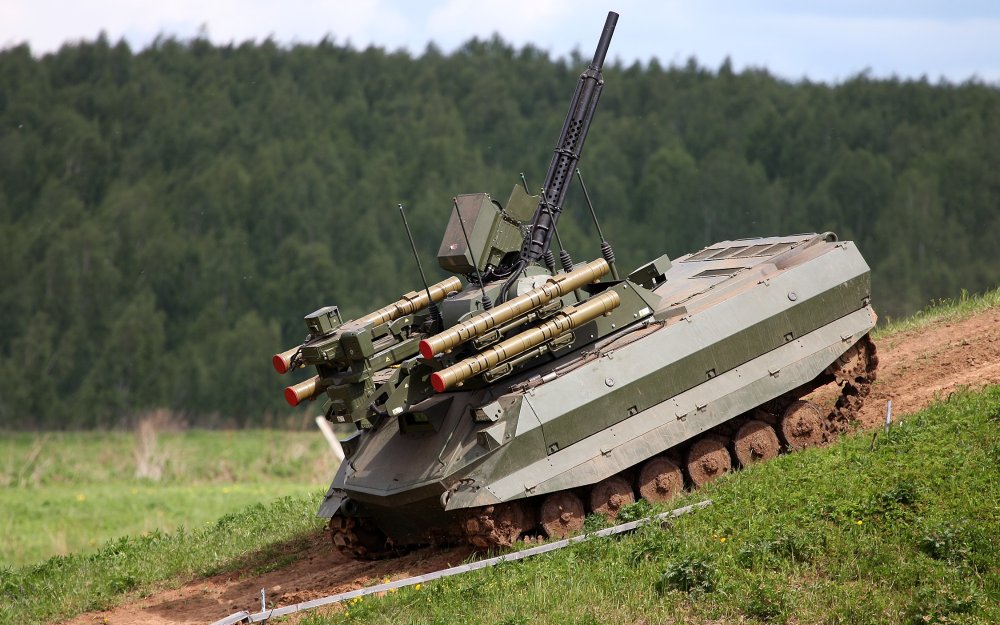
Uran-9: Russia’s Robot Tanks Are Ready For War
Somewhere Putin is smiling: The first robot tanks are about to report for duty.by Peter Suciu
Somewhere Putin is smiling: The first robot tanks are about to report for duty.
The Russian Ministry of Defense announced that a unit of the Russian Army equipped with "strike robot" is set to be established.
Russia's Minister of Defense Sergei Shoigu has already reviewed the fulfillment of the defense procurement plan, which will see the formation of the country's first unit to be equipped with the Uran-9 robotic combat systems.
The plan was presented at the 766th Production and Technological Enterprise in Nakhabino outside Moscow. It develops and manufactures robotic vehicles of various designations for the Russian military.
"As Chief of the Army Main Staff Vasily Tonkoshurov reported to the defense minister, the first unit with strike robots will be set up in the Russian Armed Forces to operate five Uran-9 robotic systems or 20 combat vehicles," the ministry told Tass earlier this month.
Uran-9, A History
The Uran-9 robotic tank is a semi-autonomous vehicle that can be controlled remotely from distances of up to 1.8 miles away. It can maneuver in the field over a variety of rough terrain and provide cover for soldiers.
It is equipped with a 30mm automatic cannon as well as Ataka anti-tank missiles and Shmel flamethrowers. However, it still isn't a true "terminator" in the sense that it can operate independently without human control. Thus, while described as a "robot," it would be more apt to call it a "remote-controlled tankette."
The newly formed experimental unit will conduct tests to determine how the Uran-9 platform can be best employed. The testing will reportedly take place at one of the Defense Ministry's scientific research centers.
"This center will subsequently train personnel that will operate Uran-9 strike robotic vehicles in operational military units," the ministry added.
However, Moscow already has put the Uran-9 to the test, as a few of the systems were employed in real-world combat situations in Syria. A pair of the twelve-tone vehicles – which measure five meters long are one-fifth the weight and just over half the length of a T-90 tank – were deployed for field testing. Two Uran-9s were reportedly transported to the battlefield by a large truck, and then radio-controlled by an operator and commander in an armored 6x6 Kamaz truck.
The Uran-9's diesel engine allows the vehicle to accelerate to twenty-two miles per hour on highways, or six to fifteen mph off-road. According to the developers, the steel armor plates can protect it from shell splinters and small-arms—though implicitly it may remain vulnerable to other relatively common weapons such as RPGs or heavy machine guns.
In the testing in Syria, the Uran-9 wasn't seen as a major success, in part because of a limited field of view for the operators, while the unit also failed to respond quickly enough at critical times.
"Shortcomings were identified during the tests in Syria. In particular, the issues of control, reduced mobility, and unsatisfactory military intelligence and surveillance functions had been considered by engineers and were rectified," said Vladimir Dmitriev, head of the Kalashnikov Concern.
This could explain why the Russian Army is creating a new unit to work out the kinks in the platform, while additional testing will occur in a safer environment.
The Russian military has already announced efforts that could soon utilize heavy robots for mine clearance, while in the future these could be deployed as scouts, and in radiation and chemical reconnaissance roles.

Uran-9: Russia’s Robot Tanks Are Ready For War
Somewhere Putin is smiling: The first robot tanks are about to report for duty. The Russian Ministry of Defense announced that a unit of the Russian Army equipped with “strike robot” is set to be established. Russia’s Minister of Defense Sergei Shoigu has already reviewed the fulfillment of the...
MOSCOW, May 24. /TASS/. The Russian National Guard put into service the latest Lebedev modular pistol, which was developed by the Kalashnikov Group (part of the state tech corporation Rostec), Kalashnikov Group CEO Dmitry Tarasov told TASS.
"Experimental models of 9-mm Lebedev modular pistol (MPL) and 9-mm Lebedev modular pistol for special-task purposes (MPL-1), which were developed under a technical assignment from the National Guard as part of the ‘Rys’ experimental design work, have been put into operation with the National Guard," Tarasov said.
Two months ago the Kalashnikov press office announced to TASS that the Lebedev modular pistol, developed by the Kalashnikov design and technological center, would be produced at the Izhevsk Mechanical Plant, which makes Makarov pistols.
On March 9, the Kalashnikov Group announced 9 that the state trials of the latest Lebedev modular pistol were over.
The Lebedev modular pistol has been developed in its standard configuration and in a version for special tasks outfitted with a silencer, an additional barrel with a seat for a silencer and elements for placing the handgun on a serviceman’s outfit.
The pistol features big upgrade potential: in particular, it allows using various attachments, larger-capacity magazines and a trigger mechanism with an automatic fire mode.

 tass.com
tass.com
"Experimental models of 9-mm Lebedev modular pistol (MPL) and 9-mm Lebedev modular pistol for special-task purposes (MPL-1), which were developed under a technical assignment from the National Guard as part of the ‘Rys’ experimental design work, have been put into operation with the National Guard," Tarasov said.
Two months ago the Kalashnikov press office announced to TASS that the Lebedev modular pistol, developed by the Kalashnikov design and technological center, would be produced at the Izhevsk Mechanical Plant, which makes Makarov pistols.
On March 9, the Kalashnikov Group announced 9 that the state trials of the latest Lebedev modular pistol were over.
Lebedev modular pistol
The Lebedev modular pistol has been developed in its standard configuration and in a version for special tasks outfitted with a silencer, an additional barrel with a seat for a silencer and elements for placing the handgun on a serviceman’s outfit.
The pistol features big upgrade potential: in particular, it allows using various attachments, larger-capacity magazines and a trigger mechanism with an automatic fire mode.

Russian National Guard receive latest Lebedev modular pistol
The Lebedev modular pistol has been developed in its standard configuration and in a version for special tasks outfitted with a silencer
URAN 9 Harbinger of future combat doctrine by JSC 766 UPTK.
Looks like a new generation of standard russian all in one solution.
Last edited:
It is the latest standardized wheeled armored platform for multiservice forces
MOSCOW, June 18. /TASS/. Russia’s state arms seller Rosoboronexport [part of the state tech corporation Rostec] will demonstrate the latest Bumerang infantry fighting vehicle for the first time at the MILEX 2021 international arms show in Belarus on June 23-26, the company announced on Friday.
"At the MILEX 2021 arms show, Russian defense enterprises will feature more than 20 models, which Rosoboronexport has offered to the world market over the past year. In addition to the reconnaissance/strike version of the Orion drone, they include the Antey-4000 anti-aircraft missile system, the upgraded 203 mm Malka self-propelled gun, a versatile armored engineering vehicle, an armored personnel carrier and an infantry fighting vehicle based on the Bumerang platform. These models will be showcased in Belarus for the first time," the press office quoted Rosoboronexport CEO Alexander Mikheyev as saying.
Rosoboronexport increases the level of military-technical cooperation with Belarus, the state arms seller said.
"Rosoboronexport is able with its unique status to synchronize the supply of weapons and special equipment with training both at industrial enterprises and using the Russian Ministry of Defense’s capabilities to provide other services in this area, while optimizing various, including logistics, costs," the chief executive said.
MILEX 2021 is Belarus’s largest defense show.
The Bumerang is the latest standardized wheeled armored platform for multiservice forces developed by the Military Industrial Company. The platform was used as the basis for developing the K-17 wheeled infantry fighting vehicle unveiled to the public at the Victory Day Parade on Moscow’s Red Square in 2015, and also the K-16 armored personnel carrier.
The K-17 infantry fighting vehicle’s baseline version is outfitted with the Epokha combat module with a 30 mm automatic gun and a coaxial 7.62 mm machine-gun and the Kornet anti-tank missile system. The K-16 armored personnel carrier is armed with a combat module with a 12.7 mm machine-gun.

 tass.com
tass.com
MOSCOW, June 18. /TASS/. Russia’s state arms seller Rosoboronexport [part of the state tech corporation Rostec] will demonstrate the latest Bumerang infantry fighting vehicle for the first time at the MILEX 2021 international arms show in Belarus on June 23-26, the company announced on Friday.
"At the MILEX 2021 arms show, Russian defense enterprises will feature more than 20 models, which Rosoboronexport has offered to the world market over the past year. In addition to the reconnaissance/strike version of the Orion drone, they include the Antey-4000 anti-aircraft missile system, the upgraded 203 mm Malka self-propelled gun, a versatile armored engineering vehicle, an armored personnel carrier and an infantry fighting vehicle based on the Bumerang platform. These models will be showcased in Belarus for the first time," the press office quoted Rosoboronexport CEO Alexander Mikheyev as saying.
Rosoboronexport increases the level of military-technical cooperation with Belarus, the state arms seller said.
"Rosoboronexport is able with its unique status to synchronize the supply of weapons and special equipment with training both at industrial enterprises and using the Russian Ministry of Defense’s capabilities to provide other services in this area, while optimizing various, including logistics, costs," the chief executive said.
MILEX 2021 is Belarus’s largest defense show.
About the platform
The Bumerang is the latest standardized wheeled armored platform for multiservice forces developed by the Military Industrial Company. The platform was used as the basis for developing the K-17 wheeled infantry fighting vehicle unveiled to the public at the Victory Day Parade on Moscow’s Red Square in 2015, and also the K-16 armored personnel carrier.
The K-17 infantry fighting vehicle’s baseline version is outfitted with the Epokha combat module with a 30 mm automatic gun and a coaxial 7.62 mm machine-gun and the Kornet anti-tank missile system. The K-16 armored personnel carrier is armed with a combat module with a 12.7 mm machine-gun.

Russia to feature latest Bumerang combat vehicle at MILEX arms show in Belarus
It is the latest standardized wheeled armored platform for multiservice forces
MOSCOW, July 5. /TASS/. The serial production of Russia’s latest T-14 ‘Armata’ tank will begin next year, Russian Industry and Trade Minister Denis Manturov told TASS on Monday.
"The [tank’s] state trials will come to a close next year. It will actively go into serial production from next year," the minister said.
The Armata is a heavy tracked standardized platform serving as the basis to develop a main battle tank, an infantry fighting vehicle, an armored personnel carrier and some other armored vehicles.
The T-14 tank based on the Armata platform was shown to the public for the first time at Red Square’s Victory Day Parade on May 9, 2015. The new combat vehicle features fully digitized equipment, an unmanned turret, and an isolated armored capsule for the crew.

 tass.com
tass.com
"The [tank’s] state trials will come to a close next year. It will actively go into serial production from next year," the minister said.
The Armata is a heavy tracked standardized platform serving as the basis to develop a main battle tank, an infantry fighting vehicle, an armored personnel carrier and some other armored vehicles.
The T-14 tank based on the Armata platform was shown to the public for the first time at Red Square’s Victory Day Parade on May 9, 2015. The new combat vehicle features fully digitized equipment, an unmanned turret, and an isolated armored capsule for the crew.

Russia to launch serial production of breakthrough Armata tank in 2022
According to Russian Industry and Trade Minister Denis Manturov, the tank’s state trials will come to a close next year
MOSCOW, July 9. /TASS/. The Technodinamika Group (part of the state tech corporation Rostec) is carrying out the Parachute R&D work to develop a cargo parachute system for airdropping the latest Taifun and Tigr armored vehicles in airborne assault operations, Technodinamika CEO Igor Nasenkov said on Friday.
"We are carrying out a piece of very important experimental design work dubbed Parachute. It is intended to airdrop large-size hardware, first of all, the Taifun-VDV [airborne infantry fighting] vehicle weighing 18 tonnes. The same platform will be used to airdrop the Tigr vehicle weighing 9 tonnes. Both vehicles, which are designed for airborne force mobility, will be airdropped with the platform developed as part of the Parachute R&D work," the chief executive said.
Preliminary trials of the new parachute system are currently underway. The newly developed payload platform with the parachute system was airdropped with a weight of 9 tonnes and subsequently with a mass of 11 tonnes. The airdropping tests will eventually increase the payloads to 18 tonnes, Nasenkov said.
The newly developed parachute system will make it possible to airdrop armored vehicles with the personnel inside, he stressed.
The Taifun-VDV armored vehicle features a 4x4 wheel configuration, composite ceramic armor protection, and reduced unladen weight. The armored vehicle can be outfitted with a Kord large-caliber machine-gun or other turret gun mounts. It is designated for operation in the Airborne Force and can be airdropped with a parachute from Russian military transport aircraft.
The Tigr is a family of Russian multi-purpose armored vehicles of more than 50 modifications, including vehicles with combat modules and anti-tank systems. The vehicle was accepted for service in the Interior Ministry, the Airborne Force, and other Russian security and defense agencies.

Russian tech firm developing parachute system for latest armored vehicles
With the newly developed parachute system, it will become possible to airdrop armored vehicles with the personnel inside
Video
The Sprut-SDM1 light amphibious tank, created by the High-Precision Weapons holding company of the Rostec State Corporation, has passed the first stage of state trials in maritime conditions. The second stage, which includes testing firing capabilities when afloat, will begin shortly.
As part of the first stage of sea trials, the vehicle demonstrated both high navigation capability during tests in the Black Sea and the ability to be transported by large landing ships. During the second stage, it has to pass firing trials using its 125-mm self-propelled anti-tank gun 2S25 in sea states of up to 3 points.
“Sprut-SDM1 is not inferior in firepower to tanks such as T-80, T-90, and its mobility on land and water is at the level of BMD-4M. The tank is capable of completing complex tactical missions, in particular, reconnaissance, working as part of raid or forward detachments, defense maneuvers, attacking through water obstacles, amphibious operations, and territory control. The main operator or Sprut is the Russian Airborne Forces, but I am sure it will also interest foreign customers. First of all, we are focusing on the markets of India, Asia and the Middle East”, said the Industrial Director of Weapons, Ammunition and Special Chemistry at Rostec, Bekkhan Ozdoev.
In the fall of this year, we are commencing climatic tests: the light amphibious tank has already proven its performance in high temperatures, now it has to withstand operation in cold conditions. Currently sea trials of the Sprut-SDM1 are underway. The tank must travel 8,000 km, which is the full range of its mileage warranty, while maintaining full reliability of its systems. Firing trials are also planned during each stage of the testing period.
The full cycle of state trials is scheduled to be completed in early 2022. According to their results, the design documentation for a light amphibious tank will be assigned with the label "O1", which allows to start serial production, and Sprut-SDM1 will be recommended for adoption by the Russian army.
Created at the Kurganmashzavod, Sprut-SDM1 is equipped with a 125-mm 2A75 cannon and corresponds to the T-90MS tank in terms of firepower. The cannon can fire modern armor-piercing sub-caliber, cumulative, high-explosive fragmentation shells, as well as ammunition with remote detonation. It can destroy targets at up to 5 km. The UTD-29 500-horsepower multi-fuel diesel engine outputs power required to move an 18-ton combat vehicle with a crew of three at speeds up to 70 km/h on land and up to 10 km/h on water.
17 upgraded BMP-2Ms will be engaged in the joint drills of Russia, Uzbekistan and Tajikistan that will run at the Kharb-Maidon training ground 20 km from the Afghan border on August 5-10

BMP-2M infantry fighting vehicle
© Stanislav Krasilnikov/TASS
YEKATERINBURG, August 3. /TASS/. Upgraded BMP-2M infantry fighting vehicles that will take part in the upcoming drills of three countries on the border with Afghanistan arrived for Russia’s military base in Tajikistan, the press office of the Central Military District reported on Tuesday.
"A batch of 17 upgraded BMP-2M infantry fighting vehicles has arrived for the 201st Russian military base stationed in Tajikistan. The new combat vehicles will replace the outdated hardware of motor rifle units," the press office said in a statement.
The BMP-2Ms will be engaged in the joint drills of Russia, Uzbekistan and Tajikistan that will run at the Kharb-Maidon training ground 20 km from the Afghan border on August 5-10. The drills will involve 2,500 troops, including 1,800 personnel from Russia, and also about 500 items of armament and military hardware. The Russian military contingent in the drills will mostly comprise units of Russia’s 201st military base in Tajikistan.
The BMP-2M features an automated fire control system enabling the commander and the gunner to operate as a single entity day and night. The combat vehicle is outfitted with panoramic sight and observation devices with the night vision capability. The new Akveduk radio station mounted on the BMP-2M is capable of operating steadily under enemy jamming. The BMP-2M is designated to deliver personnel to the frontline, boost troop mobility, armament and protection.

 tass.com
tass.com
BMP-2M infantry fighting vehicle
© Stanislav Krasilnikov/TASS
YEKATERINBURG, August 3. /TASS/. Upgraded BMP-2M infantry fighting vehicles that will take part in the upcoming drills of three countries on the border with Afghanistan arrived for Russia’s military base in Tajikistan, the press office of the Central Military District reported on Tuesday.
"A batch of 17 upgraded BMP-2M infantry fighting vehicles has arrived for the 201st Russian military base stationed in Tajikistan. The new combat vehicles will replace the outdated hardware of motor rifle units," the press office said in a statement.
The BMP-2Ms will be engaged in the joint drills of Russia, Uzbekistan and Tajikistan that will run at the Kharb-Maidon training ground 20 km from the Afghan border on August 5-10. The drills will involve 2,500 troops, including 1,800 personnel from Russia, and also about 500 items of armament and military hardware. The Russian military contingent in the drills will mostly comprise units of Russia’s 201st military base in Tajikistan.
The BMP-2M features an automated fire control system enabling the commander and the gunner to operate as a single entity day and night. The combat vehicle is outfitted with panoramic sight and observation devices with the night vision capability. The new Akveduk radio station mounted on the BMP-2M is capable of operating steadily under enemy jamming. The BMP-2M is designated to deliver personnel to the frontline, boost troop mobility, armament and protection.

Upgraded combat vehicles arrive for Russia’s military base in Tajikistan
17 upgraded BMP-2Ms will be engaged in the joint drills of Russia, Uzbekistan and Tajikistan that will run at the Kharb-Maidon training ground 20 km from the Afghan border on August 5-10
Ghost soldier
Хижак
The Russian Army has finally provided images of its newest mine system, called the ISDM Zemledeliye, during the live-fire exercise.
The new mine system was spotted during special exercises of engineers of the Western Military District at the Mulino range in Nizhny Novgorod.
The ISDM Zemledeliye is a new Russian-made mass scatterable mine delivery system that delivers mines by ground vehicle.
The new vehicle is designed to enabling or restricting the movement of enemy forces through the employment of explosive ground-based munitions at large blocks of terrain.
According to Armyrecognition.com, the Zemledeliye fires solid-fuel rockets carrying various types of land mines.
The system marks areas with mines on an electronic map and transmits data to higher levels of the command chain. Remote mine-laying has a number of advantages as it features an increased speed of mine laying in complex environments.
source:
Russian state-owned defense manufacturer Rostec announced that its subsidiary Rosoboronexport held negotiations with foreign partners and signed over 30 contract documents worth over 3 billion euros during summer exhibitions; the ARMY-2021 Military-Technical Forum, MAKS-2021 Air Show and IMDS-2021 Maritime Defense Show.
Rosoboronexport has leveraged the full potential of Russian summer defense exhibitions, thereby replenishing its order portfolio and increasing the workload of the domestic defense enterprises: the export plan now includes Su-30-type aircraft, Mi-35M/P, Mi-171Sh and Mi-17V-5 helicopters, aircraft weapons, Pantsir-S1/S1M self-propelled anti-aircraft gun/missile (SPAAGM) system, Verba MANPADS, Protivnik-GE radar, Krasukha electronic warfare system, Repellent-Patrol mobile anti-drone EW system, Kornet-EM ATGM system, remote controlled weapon stations, weapons for surface combatants and submarines, small arms, ammunition. An agreement was reached on integrating Russia’s Palma shipborne gun/missile close-in weapon system (CIWS) into a ship’s foreign-made weapons system.
"Russia’s successes in military-technical cooperation prove that the domestic industry is capable of developing new unique products and solutions that are in demand in the market. At the same time, a qualitative renewal of the plants and design bureaus’ fixed assets, their timely retrofitting and upgrading at the expense of funds received from the implementation of state defense orders and export contracts, launches the processes of positive transformation of infrastructure in regions, from household facilities to science schools, technology parks and experimental laboratories accessible to youth," said Alexander Mikheev, Deputy Chairman of the Russian Engineering Union (REU), Director General of Rosoboronexport.
Among new Russian products presented at Russian exhibitions this summer, foreign partners paid special attention to the T-14 Armata tank, combat vehicles based on the Boomerang platform, Orion-E reconnaissance/strike UAV, Antey-4000 battlefield air defense missile system, Pantsir-S1M SPAAGM system, the fifth-generation Su-57 fighter, BMP-3 with the Berezhok combat module, other equipment. More than 80% of Rosoboronexport's annual deliveries fall on products manufactured at REU’s enterprises: Rostec’s holding companies, including Russian Helicopters, High-Precision Systems, United Aircraft Corporation, and other domestic defense enterprises.
"The enterprises associated in the Russian Engineering Union are a strong growth driver of the Russian economy, which greatly contributes to the development of military-technical cooperation: their high-tech products are heavily exploited by partners from more than 100 countries, in the most challenging climatic and combat conditions," said Alexander Mikheev.
Systemic cooperation with REU enterprises is carried out in all regions of the country, enabling Rosoboronexport to continuously replenish its "library of offset projects" aimed to promptly engage domestic enterprises in drawing up tender bids for foreign buyers.
Today, Rosoboronexport's portfolio of export orders exceeds $52 billion.
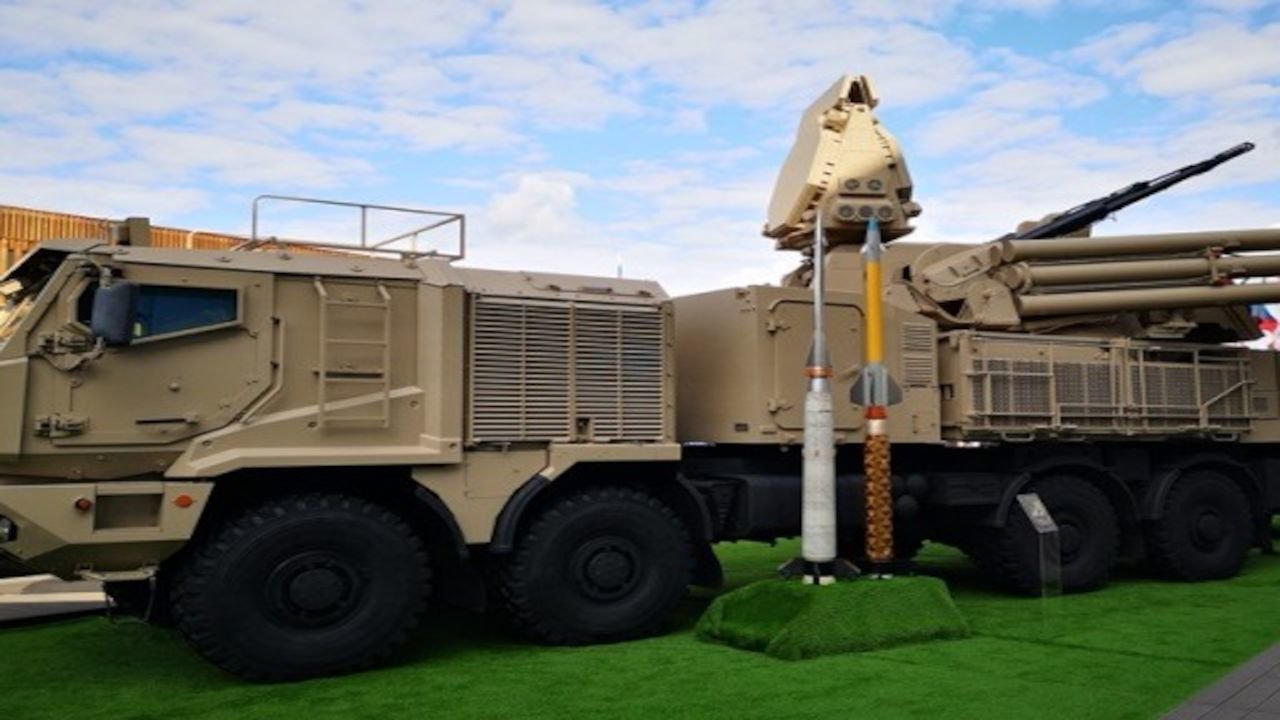
Russia signs arms export contracts worth over €3 B during summer defense exhibitions
Russian state-owned defense manufacturer Rostec announced that its subsidiary Rosoboronexport held negotiations with foreign partners and signed over 30 contract documents worth over 3 billion euros during summer exhibitions; the ARMY-2021 Military-Technical Forum, MAKS-2021 Air Show and...
defensehere.com
Super falcon
Active member
Why russian Army not getting Truely Masterpiece of armour
Why still T90M
Must watch video this guy is pakistani lives in moscow
Even india china are interested in them
Why still T90M
Must watch video this guy is pakistani lives in moscow
Even india china are interested in them
Super falcon
Active member
India in talks with russia to buy Armata the russian jaggaurnaut
Domobran7
Active member
Because Armata is not yet in production, and in any case it will take some time for the production to ramp up. So buying old reliable is a good decision until Armata can start completely replacing older tanks on production lines.Why russian Army not getting Truely Masterpiece of armour
Why still T90M
Must watch video this guy is pakistani lives in moscow
Even india china are interested in them




